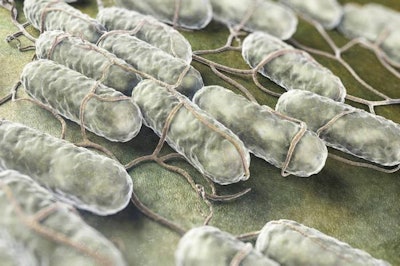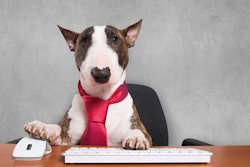
Biomapping allows pet food plant managers to monitor for the conditions that could lead to a Salmonella outbreak at their facilities. Steven Ricke, PhD, director of the Center for Food Safety at the University of Arkansas, explained biomapping during his presentation at the International Processing and Production Expo in Atlanta, Georgia, USA on January 31, 2018.
In biomapping, scientists take samples of the microorganisms in a facility or on a product, such as extruded kibble, or a piece of equipment. They search for specific species of bacteria that thrive in conditions similar to those that pathogenic, or dangerously infectious, Salmonella likes.
“In biomapping, you follow particular organisms and monitor their populations,” Ricke said.
By regularly monitoring these organisms over time, pet food facilities can keep tabs consistently on their Salmonella risk, as opposed to sporadically spot-checking for Salmonella itself.
How biomapping uses Salmonella stand-ins
These bacteria, known as indicator organisms, serve as a stand-in for Salmonella since the pathogen is much less common and may be found in isolated patches. These rare pockets of pathogens could be missed and require more thorough monitoring to be found than indicator organisms.
“We need indicator organisms that correlate to salmonella, organisms that parallel salmonella, to use to determine conditions that control salmonella effectively,” he said.
If indicator organisms are thriving, then Salmonella could too. As opposed to trying to find the Salmonella needle in the pet food plant haystack, biomapping looks for conditions that make those needles more common.
Biomapping also helps pinpoint where a Salmonella outbreak might occur within a production and processing routine. This can be key to stopping an outbreak from reoccurring, since it may identify the weak link in the biosecurity and food safety chain.
Economically speaking, using biomapping to identify better, more efficient ways to control Salmonella can mean less money spent on treatments, he said.
Future advances in Salmonella control with biomapping
While biomapping can indicate the potential for a Salmonella population boom, Ricke hopes to find even better indicator organisms that will improve the process.
Also, advances in genetic screening and genome sequencing allow more rapid screening for indicator organisms than the traditional method of growing the bacteria on Petri dishes. These genetic screening methods are still being fine-tuned, but already allow biomapping to develop a more complete survey of all the microorganisms present on a product or piece of equipment.
Biomapping seems likely to continue improving as a method to help pet food facility managers avoid dangerous and costly Salmonella outbreaks.















